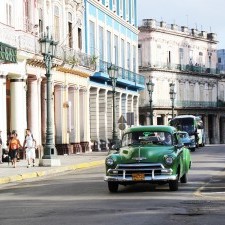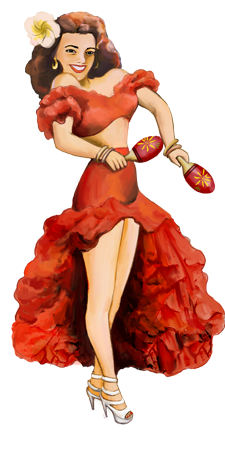

Taro fritters go hand in hand with the culinary tradition of Cuba. If we go back into the history of my country, we can see that for centuries they have been linked to celebrations, parties and traditions of different towns or farm houses across the full span of the Cuban archipelago. The town of Guane – whose native name is “Guani” and is now is the municipality of the province of Pinar del Rio, and according to the historians is the oldest settlement of this part of the country – went through many trials and tribulations, from tropical storms to pirate attacks and looting. In this town, the traditional feast of San Ildefonso, spiritual patron saint of the town, is celebrated every year from January 23 to 25. This celebration goes back to almost the founding of the town, circa the seventeenth century. These festivities lasted 3 days, and among all the attractions –dancing, games and a variety of delicacies- were taro fritters. These fritters have been passed down to nowadays table of the ordinary Cuban, and even to the most refined gourmet, since the “palates” in modern day’s Cuba have undertaken the task of giving them their well-deserved value, merging them with other preparations and even stuffing them with crab or “ropa vieja” (shredded beef brisket).
For a Cuban chef, this may be a mix of something common and novel, but to see this old recipe that can tell us so much about the history of a region and even a nation in a “faraway” place like Philadelphia, is amazing for a Cuban chef, even more when you eat them and they take you back to the most ordinary or humble place in Cuba, where taro fritters make you feel more Cuban. I think this is where you find the magic of Cuba Libre, or part of its magic; it transports you to the hospitable countryside Cuba and even to the most refined, aristocratic suburbs through your taste buds.
The same is true for the octopus dishes in Cuba Libre’s menu. This delicacy has a large following in Cuba. It has become famous in private restaurants, particularly during the last years. There are various recipes and ways to prepare it, developed by the creativity of Cuban chefs, although it has been present in the culinary heritage of the island for decades. As an example, in the coastal boroughs of Moa (which in Arhuaco language means “water here”), a municipality in the province of Holguin on the western part of the country, the main economic activity was fishing. The villagers used precarious boats called “cayucas” (kayacs), which were very fragile and dangerous, but that was their way to earn their living. Octopus was among the most common products, with which they made recipes such as octopus with rice and octopus carpaccio. The term “carpaccio”, Cuban synonym of ceviche, is also part of Cuba Libre’s menu.
The name ceviche, a more modern slang term used in Cuba’s gastronomy, takes me back to the ancestral and typical fish or similar seafood carpaccio, so popular in the fishing towns of this wonderful Caribbean island. In areas so far away from each other within the Cuban geography like Manzanillo, Caibarién or the western town of Diamas in Mantua, Pinar del Rio, fish carpaccio is very common among its culinary habits. The basic ingredients are lemon and salt, and depending on the availability or the crops of the zone, they may add cilantro, coriander, onion, parsley or any other fresh spice indigenous to the region. The sea product is the main ingredient, and may vary from the fish in season to seafood like lobster and shrimp. Each region has adapted to its native species, for example, oysters from Manzanillo. Although these are tasted throughout Cuba, they are incredibly famous and traditional in this city. They are made as a cocktail with tomato and lemon juice, onion and hot sauce (in Manzanillo they prepare them themselves with hot peppers from the area). Depending on each one’s taste, some add cilantro or another spice, but the base is the same. In this city, the oyster carts – very similar to hot dog carts in America – are very popular, even more when they are close to some bar where you can have a shot of rum or liquor of the area.
Here in Philadelphia, at Cuba Libre, they honor these Cuban traditions on a daily basis in a way I believe is one of the most enjoyable, since food – or the pleasure of eating – is intrinsic to Cuban nationality. That is why ceviche can make you feel as if you were in Caibarién or Manzanillo; add a line of rum and you will feel the aroma of the tropics.


